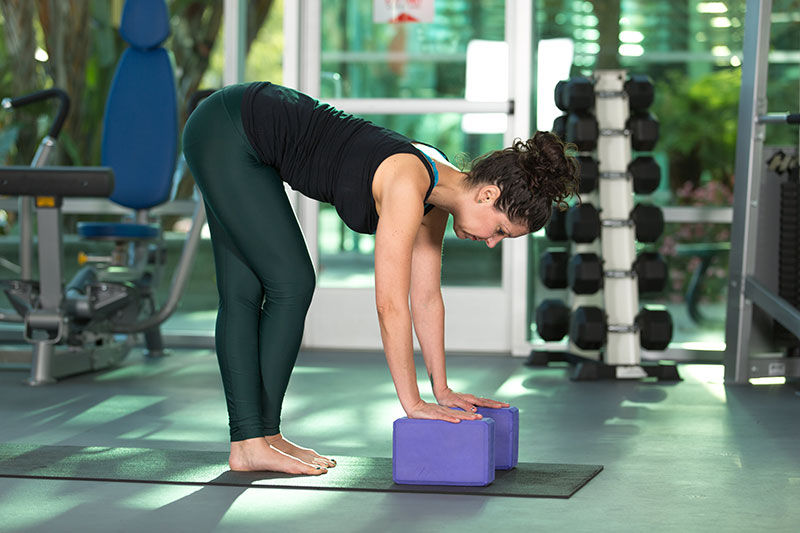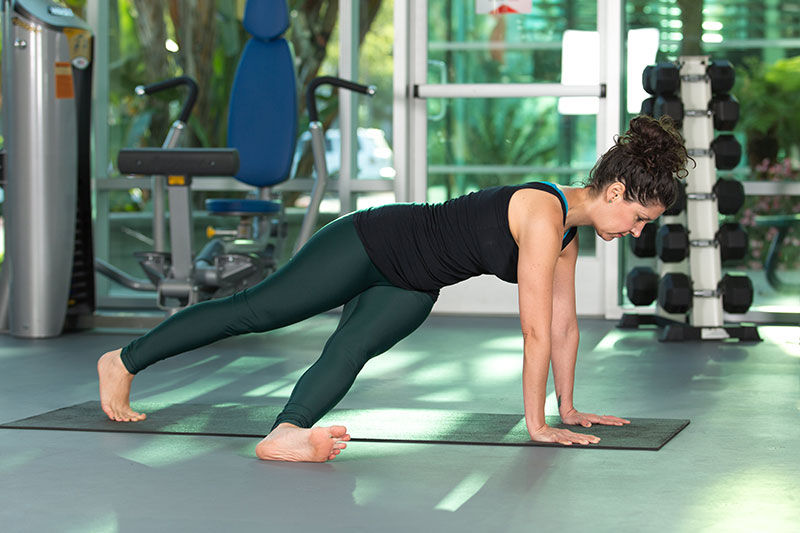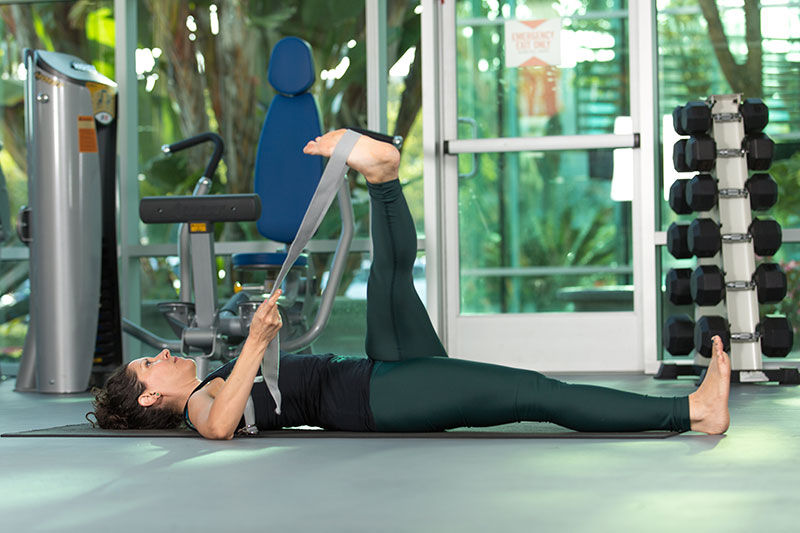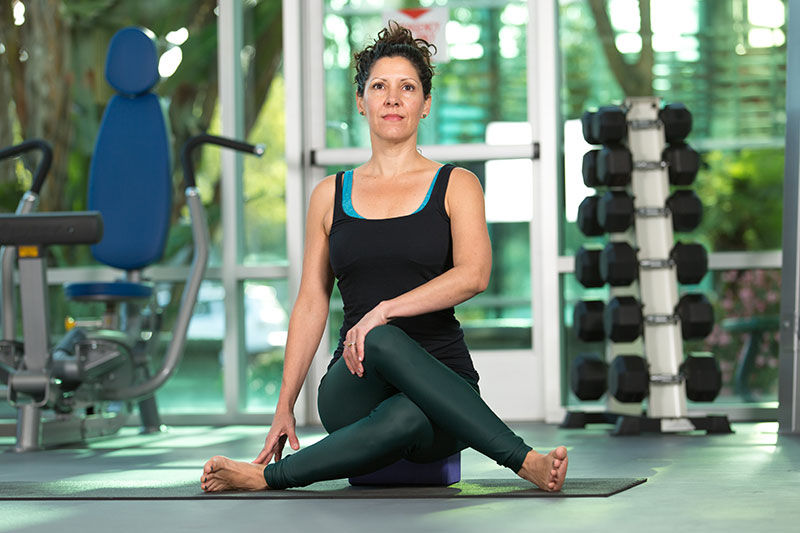The iliotibial band, commonly referred to as the IT band, is a long, thick piece of connective tissue that runs along the outside of the legs. This is an area prone to tightness, especially among runners, cyclists and weight lifters. Tight IT bands can be limiting and painful, and may also be a symptom of weakness in other areas of the legs, hips or core. If you’ve felt this tightness or discomfort on the outer sides of your legs, here’s some good news: Incorporating yoga stretches into your routine can bring relief.
Forward Fold With Crossed Legs

- Stand tall with feet hip-width apart. Cross the left foot over the right so the pinkie toes line up as much as possible. Inhale and reach your arms overhead. As you exhale, hinge forward from the hips and drop into a forward fold.
- Use a yoga block or a thick book to prop under your hands for support if you can’t reach all the way to the floor.
- Maintain straight legs, with a soft, micro-bend in your knees.
- You should feel a stretch along the IT band, but if you need to go deeper, shift your weight onto one foot.
- Stay here for five to 10 breaths and then switch sides.
Plank With Leg Extension

- This pose also strengthens the core and the shoulders, in addition to stretching the IT band.
- Assume a straight-arm plank position. Pull your left knee into your chest and then shoot your left leg out to the right side, underneath your body, so it extends past your right arm and leg. Rest on the side of your left foot, keeping it active and strong.
- Push evenly into the floor with both hands.
- Work to square your hips by keeping the right hip facing the floor and pushing the left hip back.
- The more you square your hips while keeping your left foot active, the more intense this stretch will be on your IT band.
- Hold for five to 10 breaths and then switch sides.
Kneeling Lunge With a Twist

- Start on your hands and knees, with your knees hip-width apart. Bring your left foot between your hands so that your left knee is directly over your left ankle, forming a right angle.
- Keep your right hand planted firmly on the floor or on a block parallel to your left foot. Inhale and sweep your left arm up toward the sky.
- As you twist, your left knee might want to inch to the left, but work to keep it right over the ankle.
- Hold and breathe for five to 10 breaths and then switch sides.
Supine Stretch With a Strap

- Props can be a huge help when stretching tight areas. Use a strap for maximum benefit on tight IT bands.
- Lie down on your back and bring your left leg into your chest. Wrap a yoga strap around your left foot, straighten your leg and send your foot toward the sky.
- Hold the strap in your right hand and bring your left arm to the floor, palm facing down.
- Begin to move your left leg across your body toward the right side, pushing through your heel while keeping your left shoulder on the floor.
- Move within your natural range of motion, working to keep your left shoulder down and twisting to the right as deeply as possible.
- For added comfort, place a block or a bolster beneath the right ankle or calf to give your leg more support.
- Hold and breathe for at least 10 breaths, trying to keep your leg strong as you hold. Repeat on the other side.
Cow-face Pose

- Sit on a block or a blanket to elevate your hips. Sit evenly on your hips, so you can feel your sits bones beneath you.
- Bring your left leg around so that your left knee is bent and pointing forward, aligned with your navel. Take your right leg and wrap it on top of the left, working to line up both knees. Keep your hips even on the floor and your feet relaxed.
- If you want more of a stretch, remove the block or blanket from under your hips as long as both hips can stay even on the floor. Hinge your hips forward to bring your chin closer to your knees.
- Hold for five to 10 breaths and then switch sides.
Build Your Routine
Use these five poses as part of a larger yoga practice to balance your body. Tight IT bands can be symptomatic of imbalances or weaknesses in other parts of your legs or hips. Yoga, when practiced with proper alignment and body awareness, is effective for finding those imbalances and correcting them. Breathing deeply while executing these stretches will also help release tension and allow your muscles to relax.




 by
by 







 by
by